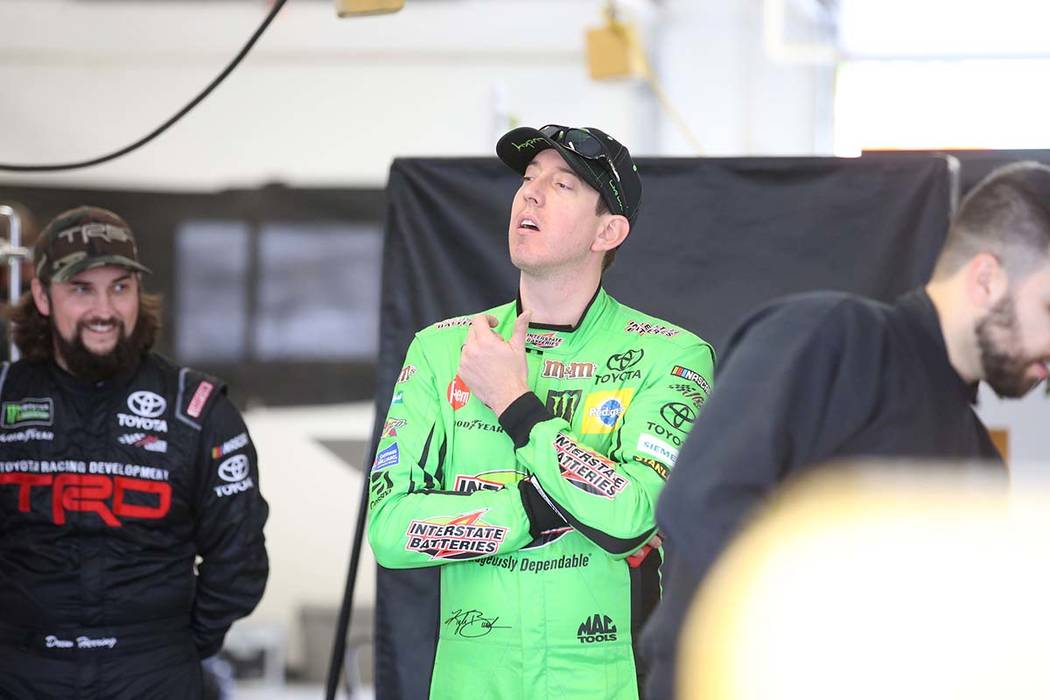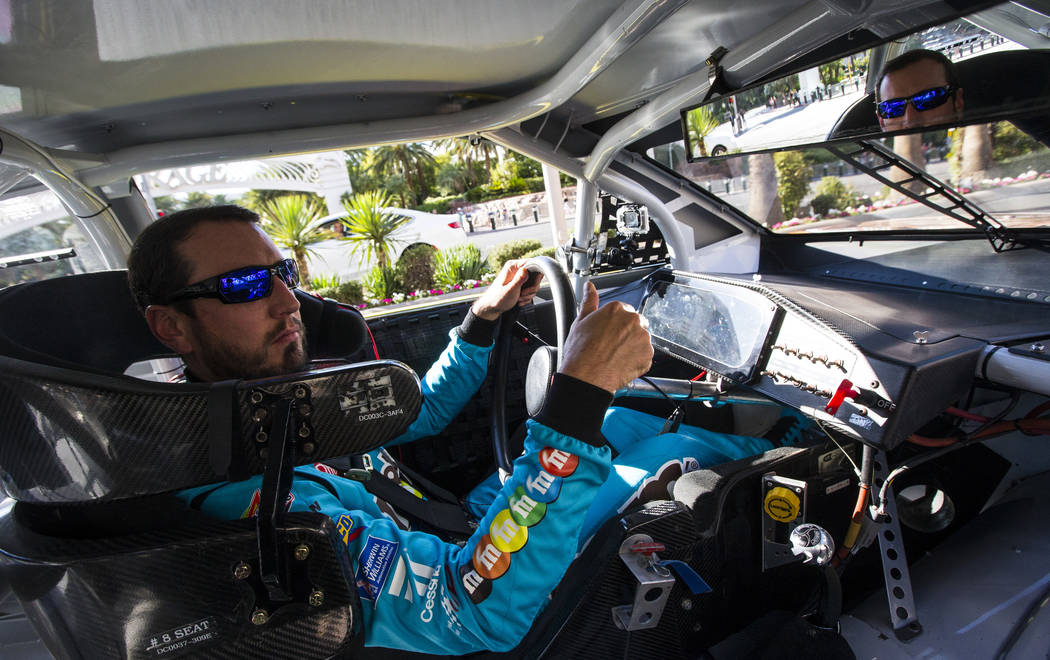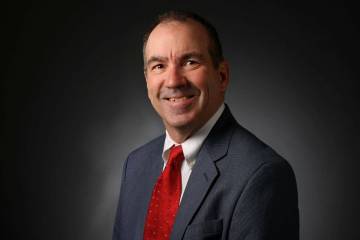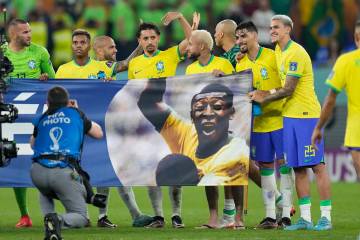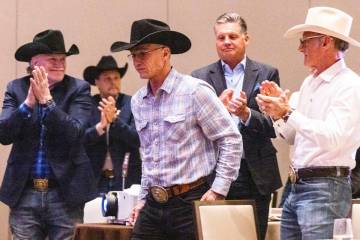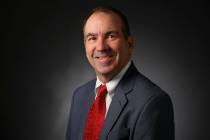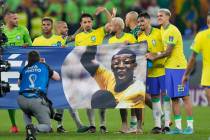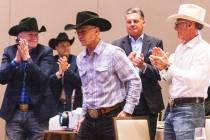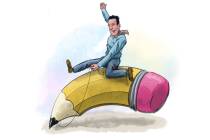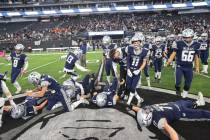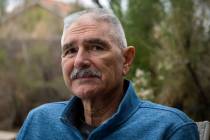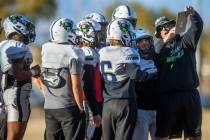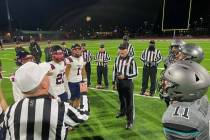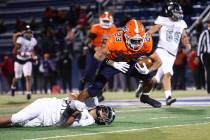Kyle Busch becomes driving force during decade of uncertainty
LAS VEGAS — Kyle Busch passed Chase Elliott on the last lap to earn a thrilling victory in the 2029 NASCAR championship race Sunday on his hometown track. It was the Las Vegan’s seventh series title, tying him with Richard Petty, Dale Earnhardt Sr. and Jimmie Johnson, and cemented the 44-year-old’s reputation as one of stock car racing’s greatest all-time drivers.
Christopher Bell, the 2027 Cup Series champion, drove a hybrid Toyota to a third-place finish while 28-year-old Hailie Deegan failed in her bid to become stock car racing’s first female champion. She was eliminated in a crash with retiring Martin Truex Jr. on a late restart before a sellout crowd estimated at 65,000 …
While auto racing’s whimsical and often volatile nature makes it nearly impossible to predict its future, it stands to reason that Kyle Busch still will be a big part of it 10 years from today.
When the 2010s began, the Las Vegas driver was 24 years old and a winner of 16 races on NASCAR’s highest level. He finished the decade with 56 career victories and two series titles. With any racing luck, it might have been five or six or even eight, Busch said, after winning the final race of the decade and his second series championship in November.
“I would like to think that any time you’re able to win more races and more championships that it helps your stature and helps you become — I don’t know what it helps you become — more successful, I guess,” Busch said.
“I would love to be sitting here talking about eight (championships). I’ve been in the sport for 14, 15 years, whatever this season is for me, and so we’re only talking about two. It’s nice to have the success, take it when you get it, but there’s certainly a few missed opportunities for sure.”
Smoother sailing ahead?
Busch’s emergence as one of the best to ever wear driving coveralls was one of the major takeaways from a tumultuous decade for auto racing.
Seating capacity was greatly reduced at Las Vegas Motor Speedway and most NASCAR tracks while other changes, some bordering on drastic — can you say stage racing? — were hastily adopted to make auto racing more compelling to a fickle sporting public.
Racing’s days of wine and roses in the early 2000s, when for a time NASCAR was adjudged to have surpassed hockey as the fourth major sport, seemed a distant backfire.
But there are signs, statistics and published reports that suggest stock car racing’s nadir finally has leveled off. That the sport in 2019 — like Stella in the movies — got some of its groove back.
“I continue to believe from a fan’s standpoint, it’s all about the product on the racetrack,” LVMS president Chris Powell said Tuesday as NASCAR’s brief off-season ahead of the Feb. 16 season-opening Daytona 500 continued. “I think we may have lost some of that over the past couple of years.”
Powell agrees that NASCAR slowly seems to be regaining its mojo — that fans who may have lost interest have started talking about the races at the office water cooler again.
Racing for dollars
NASCAR also lost its title sponsor in December, as Monster Energy stepped aside for a new business model patterned after the PGA Tour’s. Busch beer, Coca-Cola, Geico and Xfinity will instead serve as “premier partners.” The Cup Series henceforth will be known as that, with no corporate prefix.
There most likely will be other significant changes during the new decade as NASCAR attempts to regain momentum. Some will be tied to a new television deal in 2024 expected to be nowhere near as lucrative as the current $8 billion one.
A shorter schedule may help trim costs and make the sport more accessible to teams and sponsors, Powell believes. A new spec car to be unveiled in 2021 should improve the on-track product. Down the line, a hybrid car more consistent with what consumers are driving may be more attractive to NASCAR’s major automotive suppliers.
As for LVMS becoming the site of the championship race by the decade’s end, Powell says why not? Race fans still enjoy coming here and they move the Super Bowl around, don’t they?
The groundwork already may being laid — this year’s final race moves from Homestead-Miami Speedway to the one in Phoenix, where four drivers will compete for the title.
One should assume that Kyle Busch plans to be one of them.
Contact Ron Kantowski at rkantowski@reviewjournal.com or 702-383-0352. Follow @ronkantowski on Twitter.
Lapping the 2010s
A look at some of the top local motor sports stories of the past decade:
— NASCAR becomes a Busch league: With two championships and 40 victories during the 2010s, Kyle Busch overhauled Jimmie Johnson as the man to beat in the Cup Series. One of the sport's very best on the track and one of its most polarizing off it, the 34-year-old Busch is on the fast track to becoming one of stock car racing's all-time greats.
— Kurt Busch gets his groove back: Beset by off-track problems, Kurt Busch struggled to match younger brother Kyle's consistency during the first part of the decade and was relegated to driving for lesser teams. But in 2019 an invigorated Busch found a happy place as well as victory lane, putting off a retirement most though was imminent.
— LVMS reinvents itself: The 1.5-mile oval was virtually halved in seating capacity during NASCAR's recession. But it added a Cup Series playoff race to its annual spring event as well as the Electric Daisy Carnival dance music festival to remain a major player on the constantly evolving Las Vegas sports and entertainment scene.
— Sam Schmidt makes Indy 500 headlines: The Henderson-based team owner became a fixture at Indianapolis Motor Speedway with two of his cars and drivers earning pole position starting positions at the world's biggest auto race. But when the stars didn't align they crossed — James Hinchcliffe and Robert Wickens both suffered life-threatening injuries driving for Schmidt.
— Dan Wheldon killed at LVMS: The popular two-time Indy 500 champion was charging through the field at the 2011 IndyCar season finale when his car was launched into the air during a 15-car pileup. Wheldon was killed instantly when his head struck a fence post in the Turn 2 barrier. The race was canceled in his honor and the Indy cars have not been back.
— Ron Kantowski



